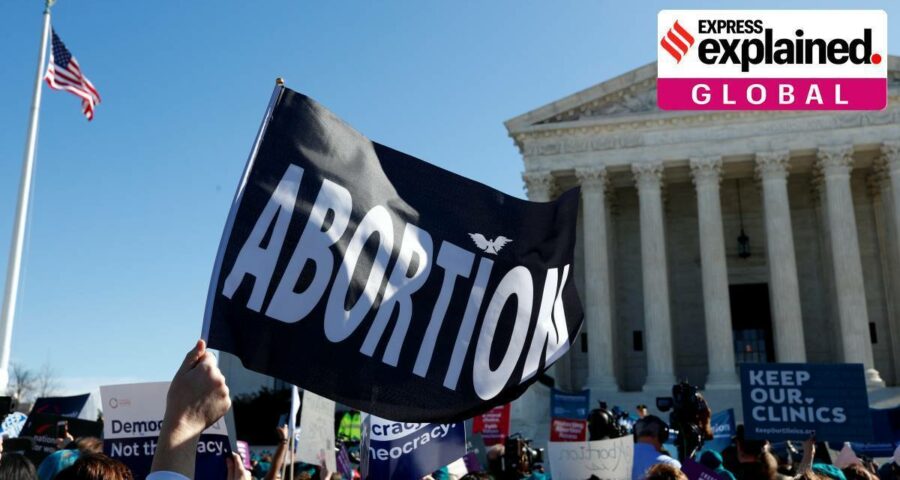In September this year, the US Supreme Court voted against banning the anti-abortion law in the country’s second largest state of Texas, which is governed by Republicans.
The US Supreme Court will hear arguments on Monday against the Texas anti-abortion law that the court voted against banning in September this year.
The nine-judge bench of the Supreme Court with a conservative majority will hear arguments related to two challenges that have been filed against the law. This is significant, because while the Texas law bans abortion, thereby prohibiting what is a constitutional right in the US (as ruled under Roe versus Wade), the law has been structured and designed in a way that makes its federal and judicial review difficult.
Interestingly, the structure of the law has been criticised by some conservatives as well who have warned that Democrats could implement similar laws in other states and that the laws could go against other constitutionally protected rights that are important for Republicans, such as gun control and religious practice or mask mandates.
This is what has got some right-leaning organisations also worried. One of them is the guns rights group called the Firearms Policy Coalition that is surprisingly siding with abortion providers. The organisation filed a brief in the court against the state of Texas because it feels that the anti-abortion law could be used as a template to restrict other individual rights that are protected by the constitution.
Newsletter | Click to get the day’s best explainers in your inbox
What is the Texas anti-abortion law and when was it passed?
In September this year, the US Supreme Court voted against banning the anti-abortion law in the country’s second largest state of Texas, which is governed by Republicans.
The so-called Texas Heartbeat Act, or S.B. 8 law bans abortion after over six weeks of pregnancy, which for many women is too soon since most do not know they are pregnant within this time period. Specifically the law says that an abortion cannot be carried out once a doctor is able to detect cardiac activity in the embryo.
The act states, “…a physician may not knowingly perform or induce an abortion on a pregnant woman unless the physician has determined, in accordance with this section, whether the woman ’s unborn child has a detectable fetal heartbeat.”
Interestingly, this law incentivises ordinary citizens instead of state officials to enforce the law. Essentially, the law authorises private individuals to sue those who provide abortions after six weeks by bringing civil action against them. Such an individual is also offered $10,000 in damages apart from attorney’s fees and costs.
The Texas law is interpreted as one of the strictest anti-abortion laws since the landmark judgment delivered under Roe versus Wade on January 22, 1973, in which the Supreme Court ruled that undue state restrictions on abortion were unconstitutional. Essentially, this ruling decriminalised abortion nationwide.
What is going to happen on Monday?
On Monday, the Supreme Court will hear two cases that challenge Texas’ ban on abortions. The first challenge to the law is coming from the US government. This lawsuit has been filed by the US Department of Justice. Essentially, the court will decide whether the department has the authority to challenge the law and if the law can be blocked again.
An article published by the National Constitution Center notes, “the two cases before the justices Monday morning are about who can sue, who can be sued, and what can federal courts do, if anything, when a state law prohibits exercise of a constitutional right but is strategically designed to prevent federal courts from reviewing it.”
The second challenge, “Whole Woman’s Health v. Jackson” is a case filed against S.B. 8, “by a broad coalition of plaintiffs, including Texas abortion providers, abortion funds, and doctors. In this case, the Supreme Court will decide whether federal courts have the power to block Texas’ abortion ban. The ban was specifically designed to evade court review,” the Center for Reproductive Rights, which is representing the plaintiffs said.
The court’s decision on Monday is significant as it might set into motion the passing of other such laws in both Democrat and Republican-ruled states.
Source: Read Full Article



